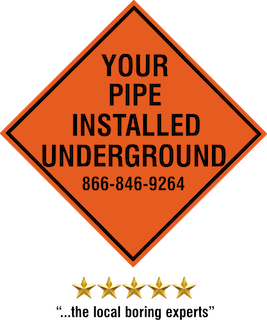Underground Boring
Road Boring Company - Underground Boring Contractors
Underground boring is a critical component in various trenchless and horizontal drilling methods, including HDD (Horizontal Directional Drilling), directional boring, trenchless methods, horizontal auger boring, jack and bore, and applications across industries such as electric, fiber, sewer, water, oil & gas, and irrigation. Here’s how underground boring is utilized in these contexts:
Road Boring Company - Underground Boring Companies
1. Horizontal Directional Drilling (HDD):
- Purpose: HDD is used for installing pipes, conduits, and cables beneath obstacles like rivers, roads, or environmentally sensitive areas.
- Process:
- Pilot Hole: A small-diameter bore is drilled along a predetermined path using a steerable drill head.
- Reaming: The bore is enlarged to the desired size by pulling a reamer back through the pilot hole.
- Pullback: The final pipe or conduit is pulled into the borehole.
- Applications: Fiber optic lines, water pipelines, and oil/gas transmission lines.
2. Directional Boring:
- Purpose: Similar to HDD, it involves precise steering to install utilities without open-cut trenches.
- Process: A boring machine drills a guided hole, minimizing surface disruption.
- Applications: Electric lines, irrigation pipes, and telecommunication cables.
3. Trenchless Methods:
- Purpose: These methods avoid traditional open-cut excavation for utility installations and repairs.
- Techniques:
- Pipe Bursting: Replacing existing pipes by breaking them and pulling in new ones.
- Microtunneling: Using a remotely controlled tunneling machine for precise installations.
- Applications: Sewer rehabilitation, gas line replacements, and water mains.
4. Horizontal Auger Boring:
- Purpose: Creates a horizontal bore using an auger and casing for utility installation.
- Process:
- A rotating auger removes soil while simultaneously pushing casing pipe through the bore.
- Typically used for short distances and under shallow installations.
- Applications: Sewer lines, water pipelines, and small oil/gas conduits.
5. Jack and Bore:
- Purpose: Utilized for precise installation of larger-diameter pipes under roads or railways.
- Process:
- Jack: Hydraulic jacks push a casing pipe forward.
- Bore: The auger removes soil from inside the casing.
- Applications: Water mains, sewer systems, and oil/gas pipelines.
6. Electric and Fiber Optic Installation:
- Purpose: Underground boring provides a safe, efficient way to install high-voltage lines and fiber optic cables with minimal disruption.
- Advantages: Protects cables from environmental factors and ensures faster deployment in urban and rural areas.
7. Sewer and Water Infrastructure:
- Purpose: Trenchless boring methods are vital for installing and rehabilitating water and sewer pipelines.
- Advantages:
- Reduces traffic disruption in urban areas.
- Provides long-term solutions with minimal environmental impact.
8. Oil & Gas Pipelines:
- Purpose: Directional boring and HDD ensure pipelines cross safely under rivers, highways, and sensitive terrains.
- Applications: High-pressure transmission pipelines for oil, natural gas, and other petrochemical products.
9. Irrigation Systems:
- Purpose: Precision boring allows for the installation of irrigation pipes across fields, beneath roads, and through rocky terrains.
- Applications: Agricultural water supply systems and sprinkler pipe installations.
Benefits of Underground Boring Across Applications:
- Environmental Protection: Reduces disruption to ecosystems, rivers, and forests.
- Minimal Surface Disturbance: Ideal for urban areas with heavy infrastructure.
- Cost-Effective: Avoids costly excavation and surface restoration.
- Speed: Faster than traditional open-cut methods.
- Precision: Modern boring technologies offer exact placement and steering.
Road Boring Company - Underground Boring Near Me
By leveraging underground boring, industries can efficiently and sustainably meet the growing demand for utility installations, maintenance, and upgrades, minimizing environmental and societal impact.


